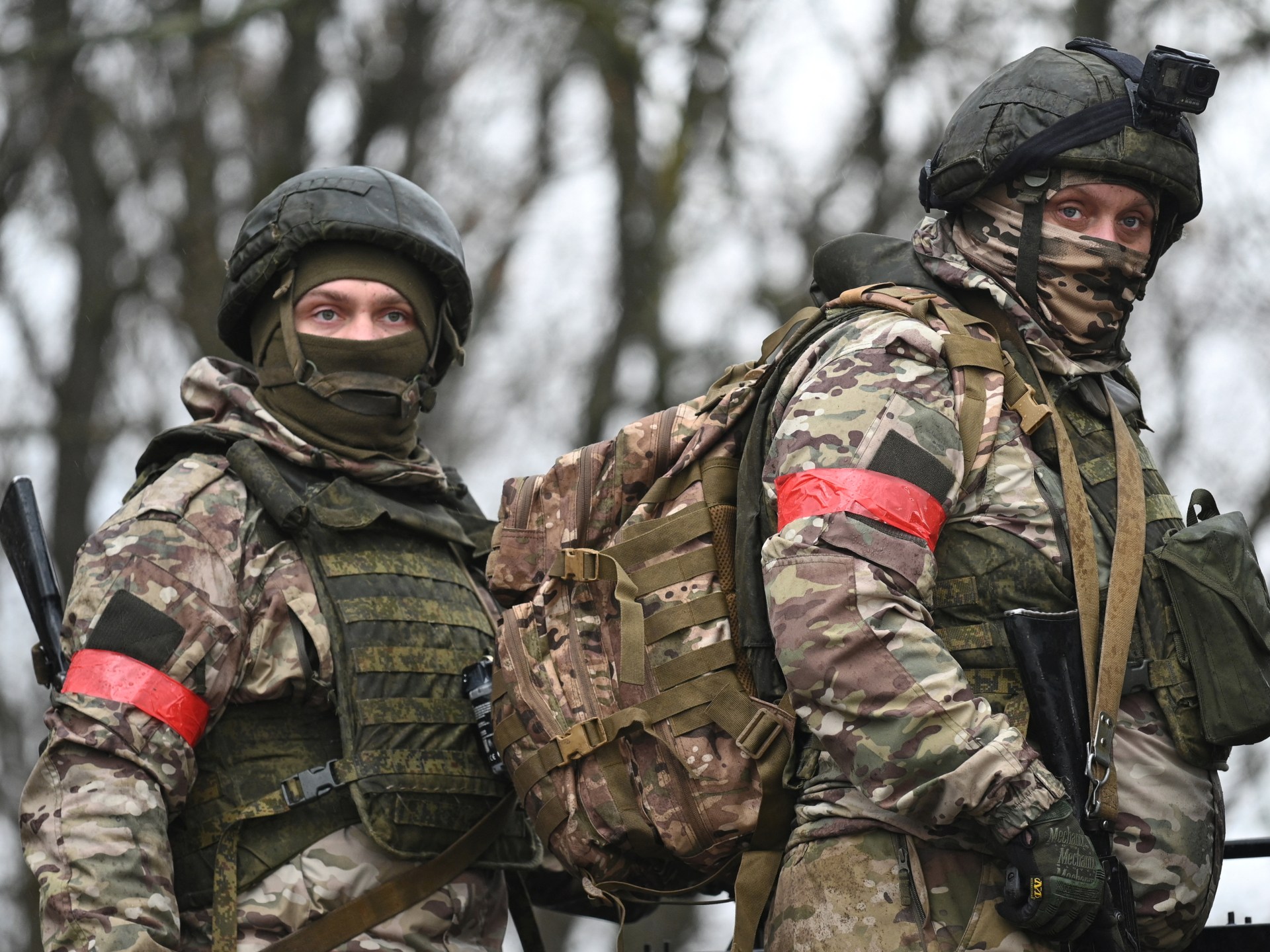Kyiv, Ukraine – Donkeys are the newest mode of transportation some Russian military units have begun using on the front lines of eastern Ukraine, according to Moscow’s soldiers and pro-war bloggers.
The use of braying quadrupeds to deliver ammunition and supplies is “normal”, retired Russian Lieutenant General Viktor Sobolev reportedly said.
“It’s better to have a donkey killed instead of the two men that deliver cargo in their vehicle,” he told the Gazeta.ru website on February 6.
Last year, Russia began using motorcycles, dirt bikes, electric scooters and civilian cars for frontal attacks on Ukrainian positions.
Observers say the downgrading reflects a growing trend that significantly hobbles Russia’s already slow advance on the war’s main theatre – the southeastern Donbas region.
The tanking of armoured vehicles
Military analysts have told Al Jazeera that the Ukrainian army has already destroyed a lion’s share of Russia’s tanks and armoured vehicles.
The shortage is increasingly hard to replenish, even as Moscow digs into mammoth Soviet-era stocks to refurbish decommissioned and dysfunctional vehicles.
“Armoured vehicles are being put out of use with a horrifying speed,” Nikolay Mitrokhin, a researcher with Germany’s Bremen University, told Al Jazeera.
“The production of new ones and the restoration of damaged or mothballed ones is far behind the losses,” and Russia’s park of armoured vehicles for the offence will last “mere months,” he said.
Meanwhile, there are “colossal” problems with delivering supplies to the front line as ubiquitous Ukrainian drones destroy armoured cargo vehicles and civilian cars, he said.
To prevent the tiny, explosives-laden drones from sneaking into tank hatches or hitting the armour, Russian servicemen cover them with metal bars, nets and rubber covers, creating what Ukrainians disparagingly call “royal barbecues”.
Russia cannot churn out more than 60 tanks a year, according to Pavel Luzin, a defence analyst with the Center for European Policy Analysis, a think tank in Washington, DC.
“We’re not talking about hundreds,” he told Al Jazeera.
The biggest problem is the manufacturing of turrets and guns, while complicated electronic components, such as infrared thermal imaging and targeting systems once made of European components are replaced with less reliable Chinese ones, he said.
However, a retired Ukrainian general thinks that Moscow has “up to two years” until it completely runs out of armoured vehicles.
Russian defence factories work in shifts, refurbishing old and decommissioned tanks to put together a functioning one, said Lieutenant General Ihor Romanenko, former deputy head of Ukraine’s general staff of armed forces.
“It’s up to two years, considering the current losses they are suffering,” he told Al Jazeera. “Understandably, the share of modern armoured vehicles, tanks and other armoured weaponry will be falling.”
As a result, the number of tanks and armoured vehicles Russia has at hand is fewer than 7,000 – a 20-fold reduction in comparison with the Soviet Union’s 140,000 in 1990, according to The Insider, a Russia-focused, independent media outlet.
The shortages may have already resulted in the noticeable slowdown of Russia’s occupation of Donbas.
By early February, the number of Russian attacks along the front line fell by a third, and the amount of occupied land fell four-fold since January to just 21 square kilometres (eight square miles), according to Oko Gora, a Ukrainian analytical Telegram channel.
And for the first time in months, Ukrainian forces managed to counterattack and take back tiny areas around the strategic southeastern city of Pokrovsk.
However, despite a growing shortage of artillery, Russia has tripled the output of shells to about 3 million a year, while North Korea has reportedly supplied millions more.
Pyongyang and Tehran are understood to have provided hundreds of missiles, adding up to hundreds of Russian-made ones that rain down on Ukrainian cities.
Their effectiveness is, however, is in question, some observers have noted.
Six Iskander missiles, with a total cost of about $18m, were launched on Kyiv on Tuesday, killing one and wounding four.
Air defence
The Russian-Ukrainian border stretches for almost 2,300km (1,430 miles).
These days, Ukrainian drones and missiles reach deep inside Russia, striking military plants, bases, airstrips and oil refineries from the Arctic to the Black Sea coast.
Moscow “couldn’t manage to build air defence lines parallel to the front line, and couldn’t cover many important sites”, analyst Mitrokhin said.
Even though Russia has fighter jets, and advanced anti-missile and air defence systems, “they won’t be able to increase [their capabilities] fast and by a lot,” Lieutenant General Romanenko said.
Meanwhile, Ukraine’s “capabilities and potential are growing,” he said, as Kyiv ramps up the development and production of drones and missiles.
Kamikaze ‘camels’
Alongside donkeys, Russia has been accused of employing so-called human “camels” – servicemen ordered to run towards Ukrainian positions with a heavy load of ammunition for the upcoming assault team.
The survival chances of these soldiers and stormtroopers are low.
Pro-Kremlin war reporters have decried the deaths or demobilisation of experienced servicemen as new recruits reach the front line after brief training.
“An exemplary fulfilment of serviceman’s duty propagated by mass media is almost always associated with the serviceman’s death in battle,” pro-Kremlin analyst Viktor Murakhovsky wrote on Telegram on January 16. “Willingly or unwillingly, an association is generated – to become a hero, one has to die heroically.”
The Kremlin claims recruiting men is not a challenge. Some 600,000 soldiers fight in Ukraine.
But the “price” of each recruit has grown more than 10-fold since 2022.
These days, the enlistment payment approaches $30,000, the monthly salary begins at $2,000, while compensation for a lost limb or a grave wound is about $40,000.
Without declaring a new round of mobilisation, the Kremlin stands accused of forcing labour migrants to “volunteer”. Citing dozens of soldiers, the Verstka magazine, an independent online news publication founded by Russian journalists, reported on Tuesday that troops who are about to be demobilised are made to extend their service.
“They said, ‘If you don’t sign the contract today, we’ll send you to storm’” Ukrainian positions, one of them was quoted as saying.
∎